Editor’s Note: This story was originally published in The Relationships Issue of our print magazine.
——
Grandma Driskill says Alaska saves its best self for those who are bold enough to call it home. “You earn the beauty,” she smiled on my first visit nearly a decade ago. I get it now. Friends and visitors venture up here to our own “little Alaska” west of Boulder, Colorado, seeking the novelty of moose and wild columbine and magenta sunsets, often leaving with little but mud on the undercarriage of their sedans. Loyalty to a place on its lesser days is rewarded with sacred, secret moments that belong to those who do their time. Seems like the principle applies to most things in life, no? Our finest days, proudest work and richest relationships involve a level endurance and commitment to the less glamorous aspects of our human existence––that which doesn’t necessarily glimmer at first glance. There is dignity in patience, an underrated virtue in simply showing up to your life, for your loved ones, and at your table.
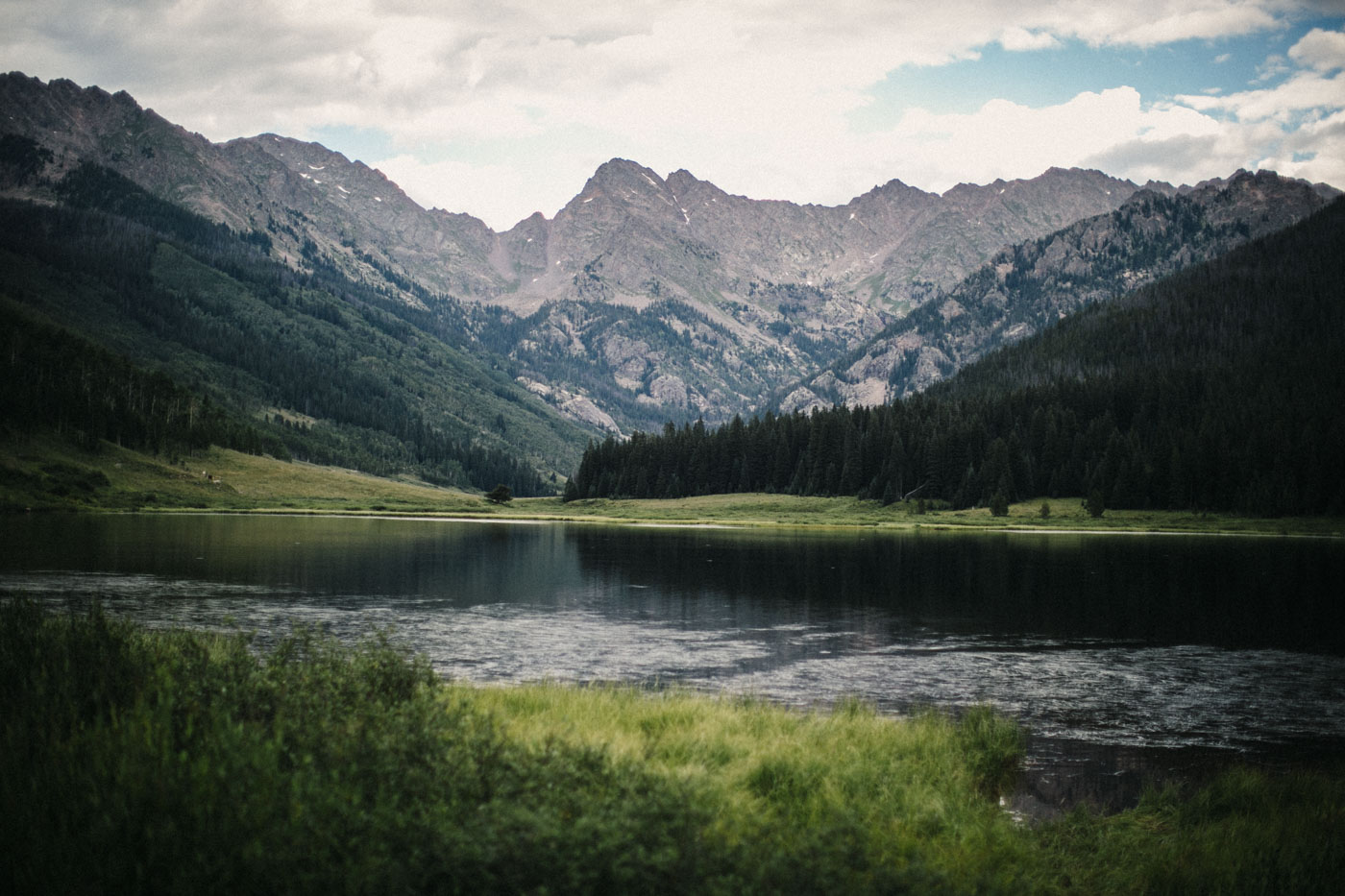

Fishing is much the same. Arrive at the shore with an expectation to fill a cooler with cutthroat, and you’ll likely leave disappointed. For the hobbyist angler, casting a line or dipping a net is rarely so much about the catch than it is about showing up. It’s about the attempt. It’s about planting your feet firmly into the earth, accepting an invitation to consider the incomparable power of natural world and the mysterious ways in which we are bound up in it. And not just once. It’s a repeated call. We bait our hooks with dinner aspirations, but it’s almost requisite to walk away empty-handed and covered in bug bites more often than not. Like grandma says: the beauty, the bounty is earned.
Fishing is how we busy, modern folks are called back to ourselves. There’s a savoir faire to be had that will always trump your bi-weekly hot yoga session downtown. When we set intentions, wake up early, leave the office before four o’clock, and deny the half-dozen legitimately good reasons not to dig the waders or wellies out of storage, the universe somehow celebrates the decision and we meet ourselves again as if for the first time at the water’s edge. Peace rewards effort. An imperfect, storied pilgrimage to the wilderness rewards heavy hearts with reprieve, assurance and communion with who we’ve been and where we’re going. Get still and you’ll find an abiding truth that the river, the trees, the mountains and their environs have lived long before us, and will live long after. It can be a little unnerving to realize how ridiculous the worry, stress and banal responsibility of a daily urban grind appear. We’re here to enjoy this gig called life. Fish or no fish, the prize is cognizance to these things.
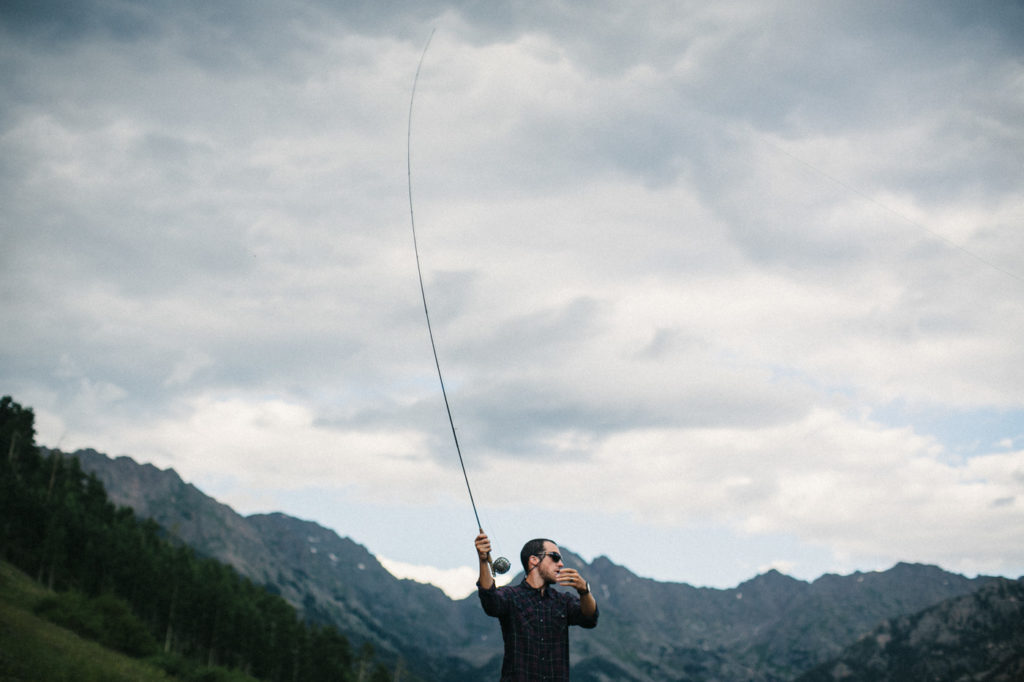

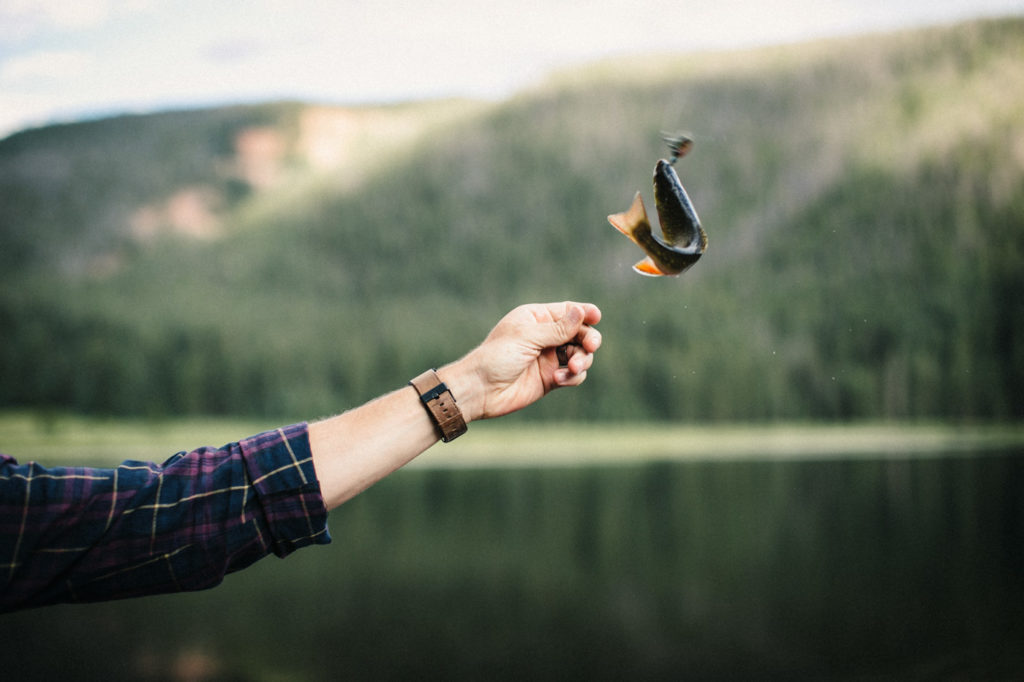
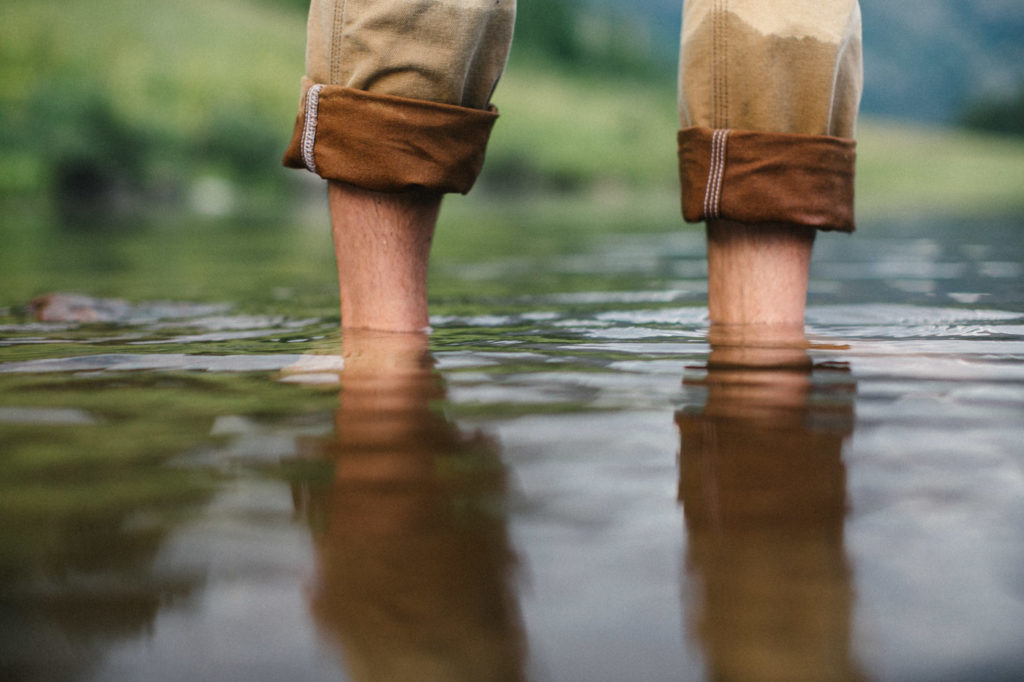
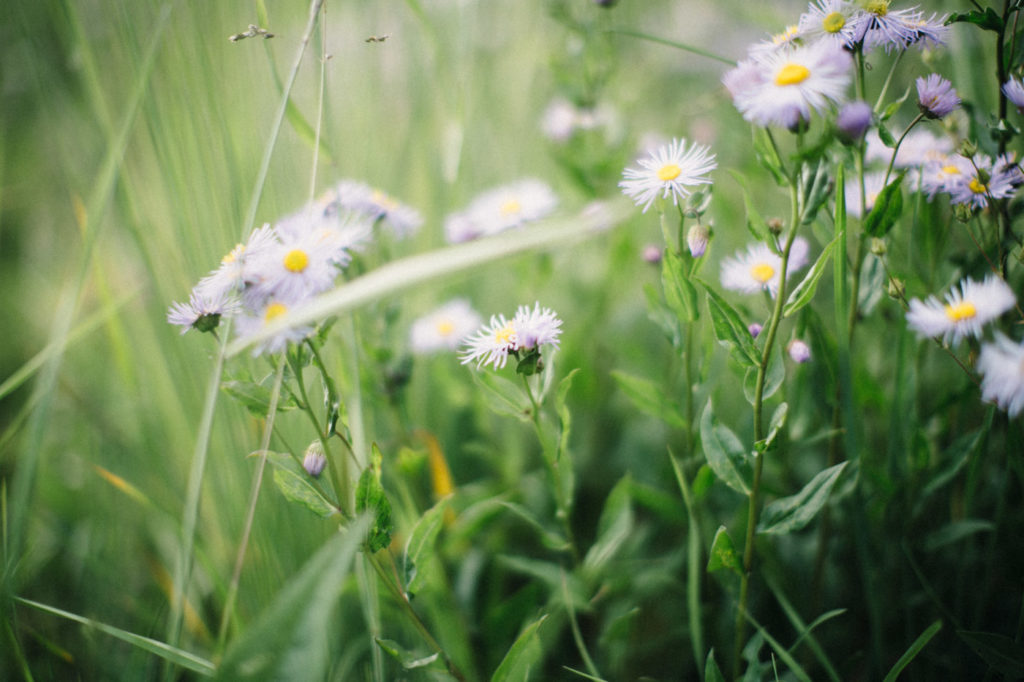
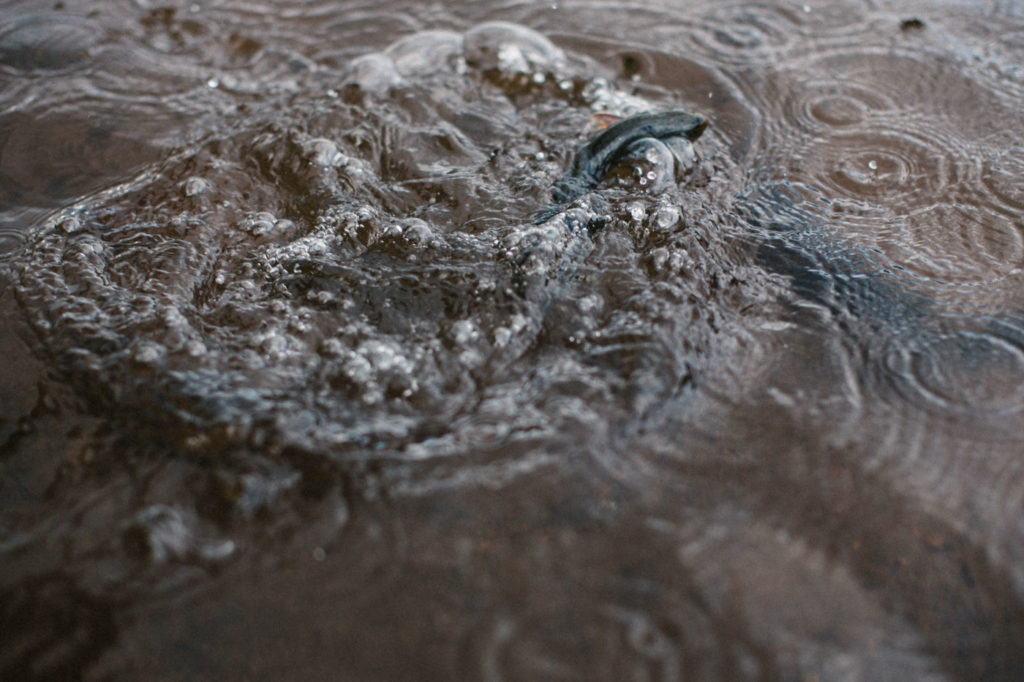
“Men come and go, cities rise and fall, whole civilizations appear and disappear—the earth remains, slightly modified. The earth remains, and the heartbreaking beauty where there are no hearts to break… I sometimes choose to think, no doubt perversely, that man is a dream, thought an illusion, and only rock is real. Rock and sun.”
― Edward Abbey
By and large, teasing a line is an act of humility. It’s a fleeting encounter with self-sufficiency, a reminder of how far and wide we’ve managed to stay from the sources of our sustenance. We remember what we have forgotten––that our health and happiness depends on the bonds we make with the land, the community and the hands that feed. Providing a meal for yourself is infinitely satisfying. When was the last time you remember being so invested in feeding yourself? The terracotta pots teeming with mint or rosemary on the windowsill don’t count, neither does waiting in that absurd line for a burrito bowl or braving the Whole Foods parking lot.
And so, there comes a responsibility to what we take from the place. If you do catch something you’re entitled to keep, it’s important to cook and consume with care. We respect the time and the gift by preparing freshwater catch with simple, unfussy ingredients that “let things taste of what they are,” as Alice Waters would remind. There is little need for avant garde technique and preparation when it comes to handling fresh fish. Straightforward, timeless ingredients are both wholly satisfying and honoring to the effort. Pack a cast iron skillet along with a few lemons, herbs, quality oil, and a few other tools with your gear before your next trip to the water and revel in the beauty you’ve earned.
“To be whole. To be complete. Wildness reminds us what it means to be human, what we are connected to rather than what we are separate from.”
― Terry Tempest Williams
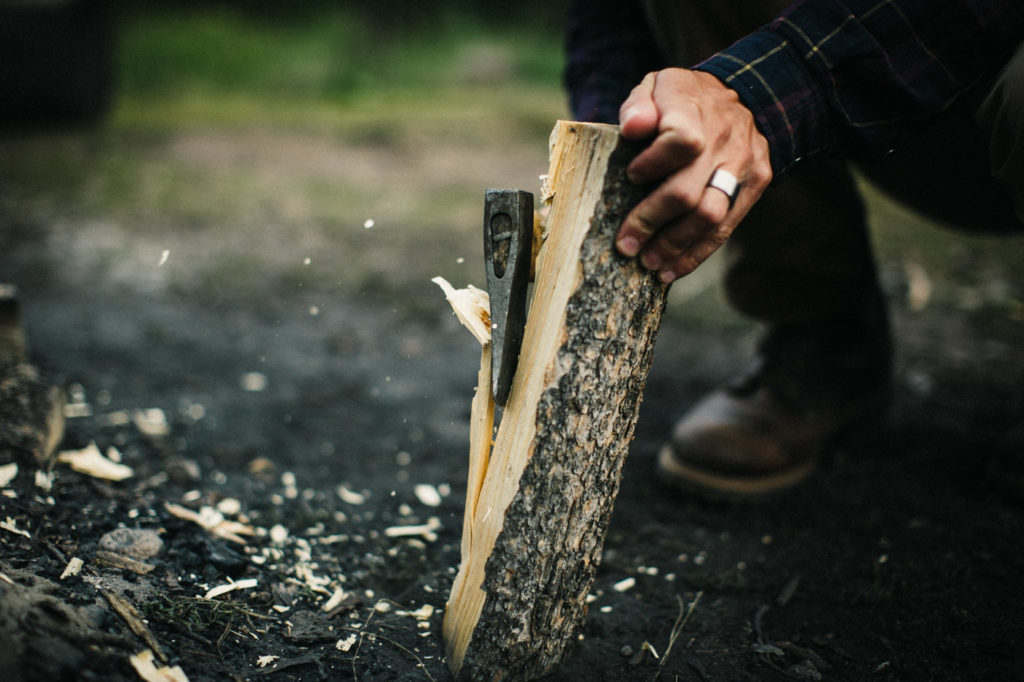

Handling Fresh Caught Trout
To gut and clean a fresh trout, place fish on a flat, clean surface. Using a sharp knife, you’ll make your first cut at gill level from the belly side through the jawbone and tongue, careful not to cut the spine. Next, make a linear incision along the belly from the anal pore to the throat, just beyond the pectoral fin. Cut slightly under the skin so as not to puncture the guts themselves, fouling the flesh and making it inedible. To remove the entrails, hold the trout firmly in the mouth cavity and pull downward and out. Rinse the exposed meat in cold water. Note the remaining bloodline along the spine. Using a spoon or your finger, scratch away and rinse again with cold water.
Building a Suitable Fire
To cook your fresh catch in a cast iron pan, you’ll need a fire big and hot enough to sear the flesh, but not so hot to blacken, or pose danger to a tending cook. Begin by gathering three types of wood: tinder (twigs, dry needles, leaves), kindling (small sticks and wood chips), and fuel (large dry split logs). Loosely pile bits of tinder in the center of your fire pit. Add kindling using the teepee method, arranging sticks over the tinder like the name suggests. Ignite the tinder with a match and blow lightly at the base of the fire to build flames. Add more tinder as the fire grows stronger, eventually adding the fuel wood once the teepee falls and flame is projecting some heat. Maintain a medium sized flame for even cooking.
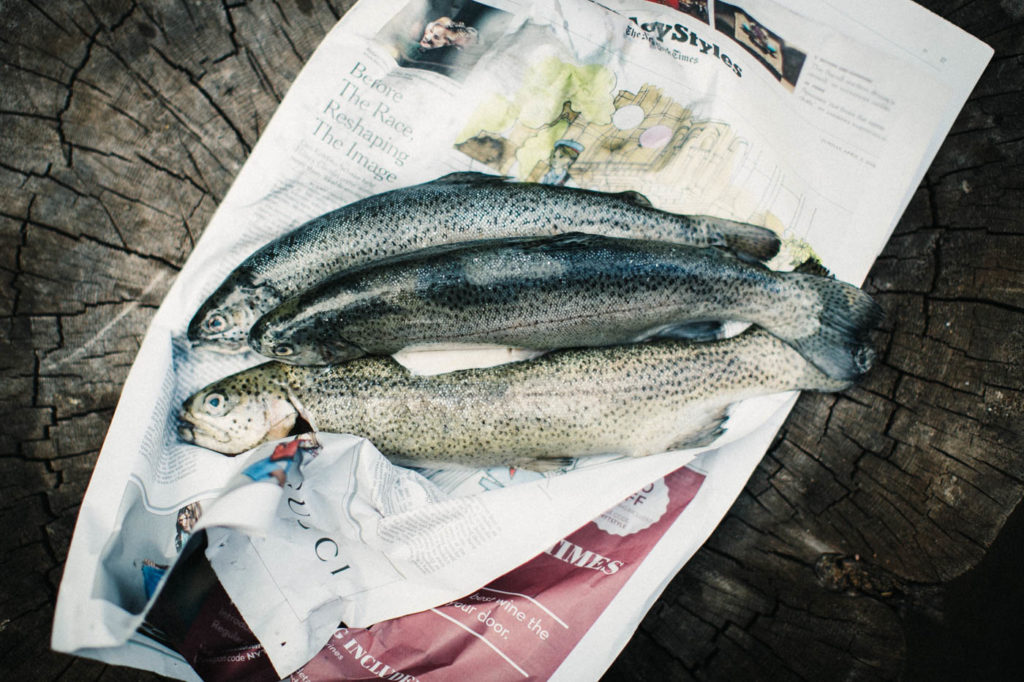
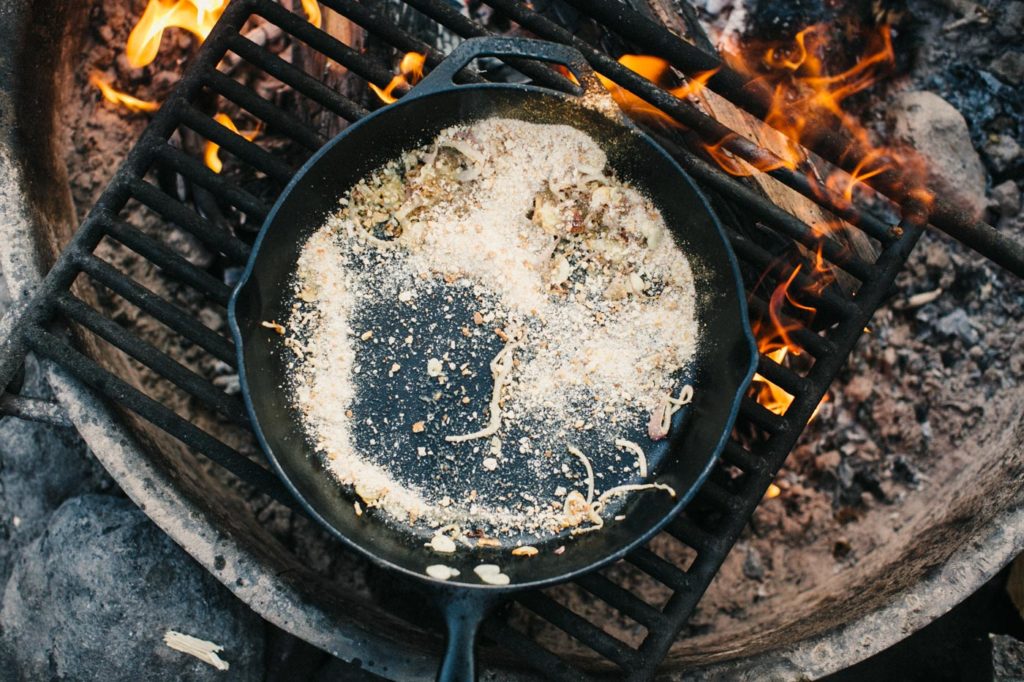

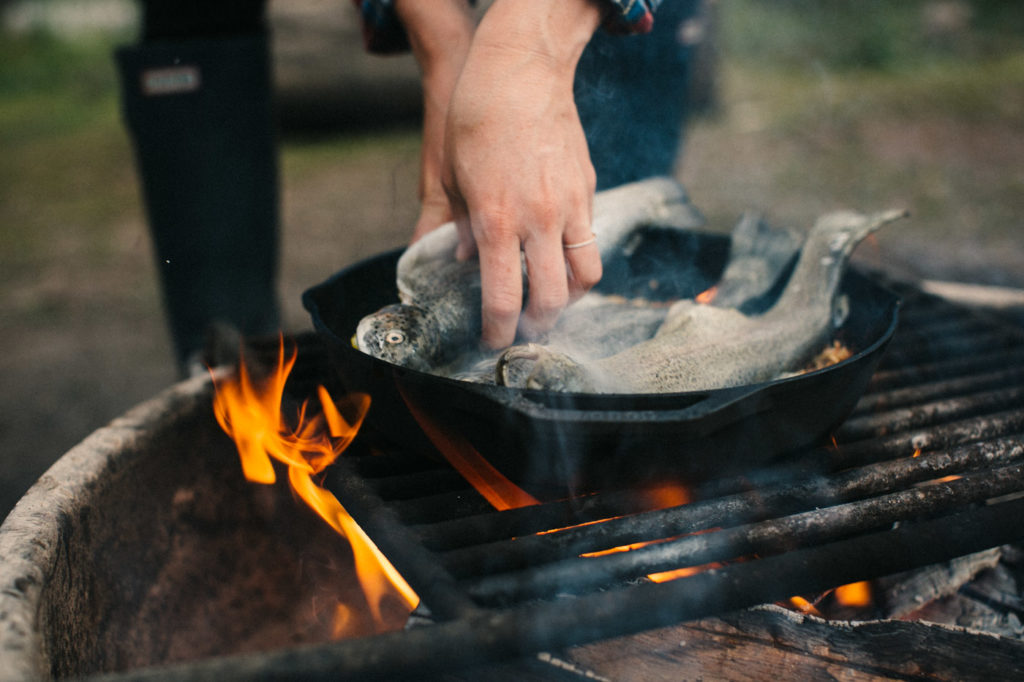
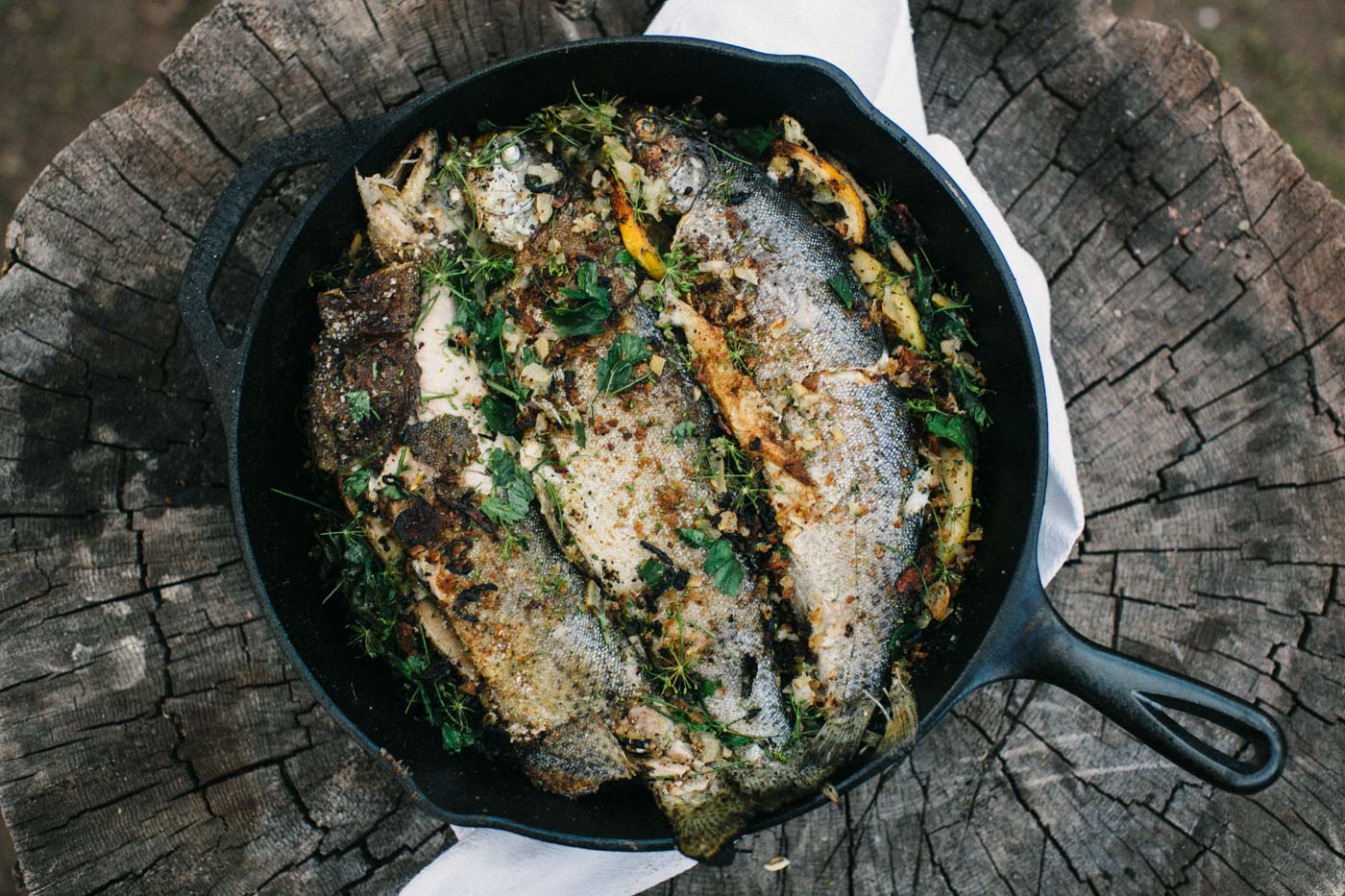
Whole Cooked Rainbow Trout
Serves 2-4
- 3 whole trout, gutted and cleaned
- ⅓ cup quality olive oil
- 6 garlic cloves, shaved
- ¼ cup shallots, thinly sliced
- ½ cup fresh breadcrumbs
- 1 apple, cut into ¼ inch wedges
- 2 lemons, cut perpendicular into ¼ inch rounds
- ½ cup flat leaf parsley, chopped
- 2-4 tbsp. fresh dill or dill fronds, chopped
- 2-4 tbsp. preserved lemon, minced
- Salt and pepper to taste
First, prepare the lemons, apples and accoutrements. Set clean fish on a dry work surface and stuff the inner cavity with several slices of lemon and apple. Give the parsley and dill a hearty chop and set aside.
Set a large, well-seasoned cast iron pan on the grates centered over the hottest part of the fire. Pour a glug of olive oil into the hot pan, then add garlic and shallot. Stir with a wooden spoon or paddle to coat. When edges begin to brown, stir in bread crumbs.
Gently transfer the trout, one by one, into the skillet. Dress with a bit more olive oil and a dash of salt. Depending on how hot the fire is, you should achieve a nice sear on the underside in 3-5 minutes. Using the edge of your spoon or paddle, carefully flip fish one by one, cooking for at 5-7 minutes on this side.
As the alternate side browns, drizzle remaining olive oil over the fish and dress with parsley, dill and preserved lemon. Use your spoon or a fork to move things around, scooping and distributing brown shallots and garlic among the greens. Remove from heat and serve immediately.





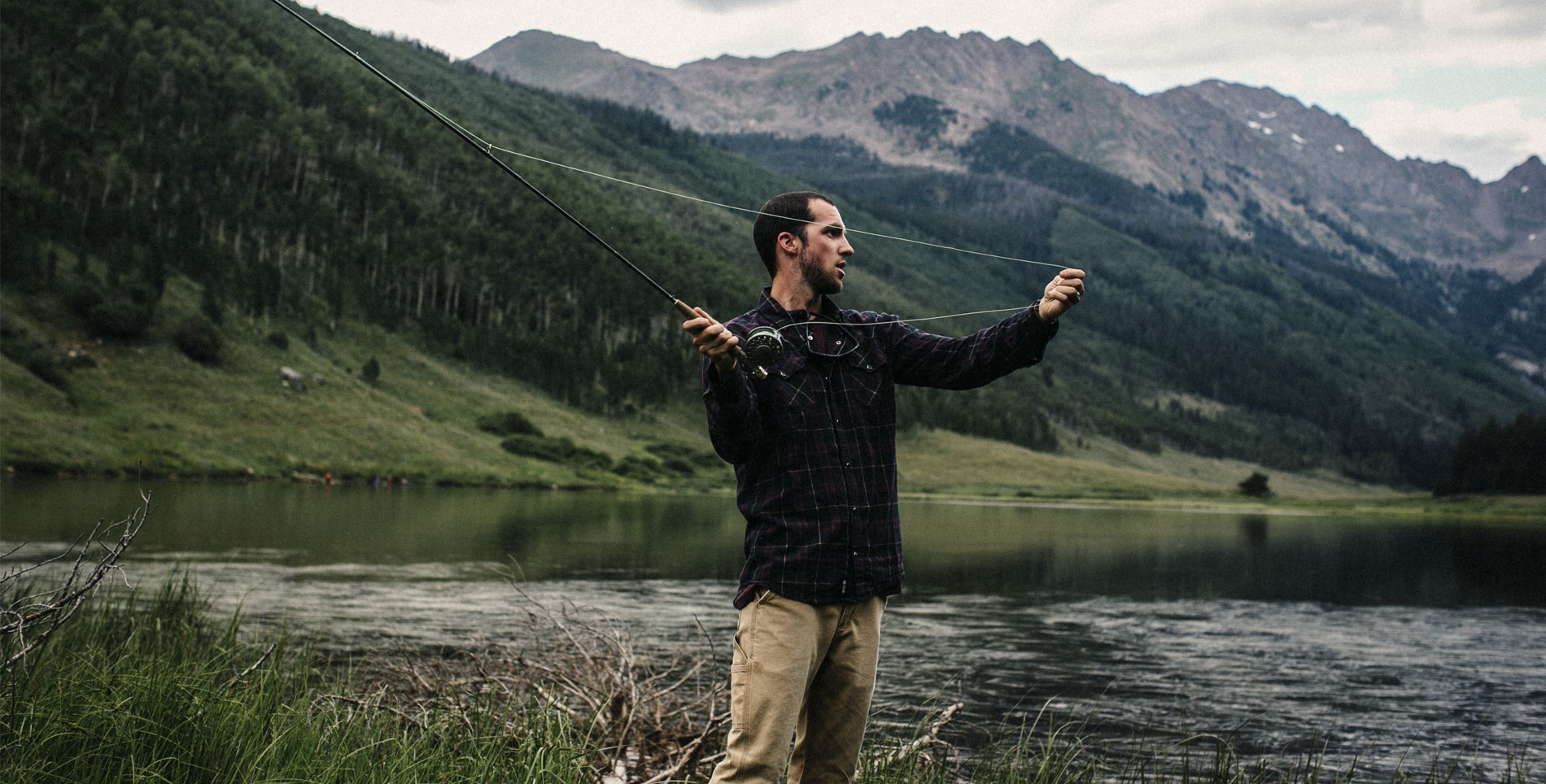

Our comments section is for members only.
Join today to gain exclusive access.